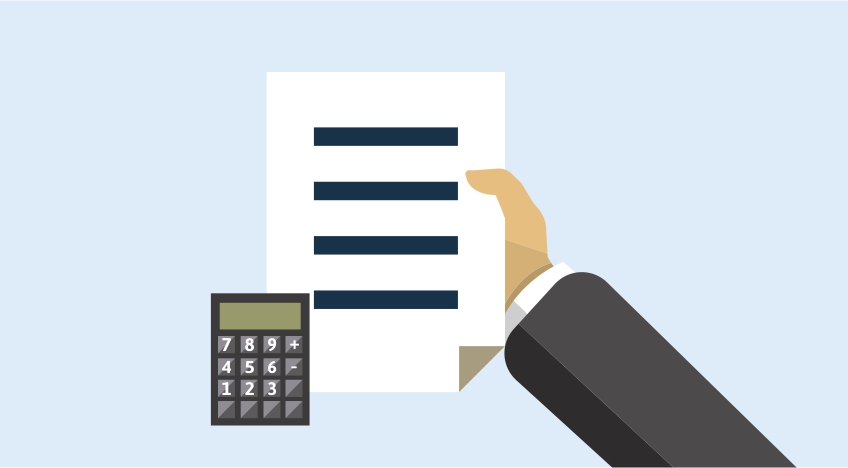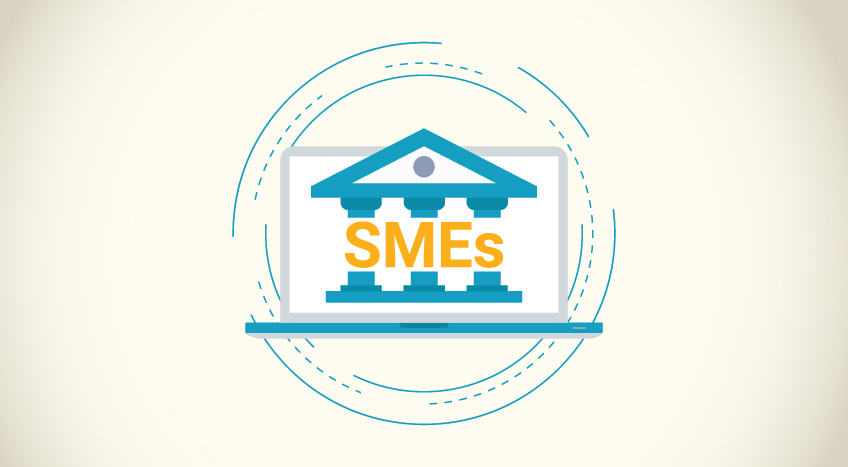A credit note is a vital business document that enables invoice adjustments, manages refunds, and maintains clear financial records. When financial transactions are maintained and managed effectively, business operations become smooth. Credit notes make business operations more workable by allowing future invoice adjustments instead of instant refunds.
Assume you are a businessperson, and a customer returns a defective product received from your company. In such scenarios, refunding an amount instantly might not be possible. Hence, you can issue a credit note, which acknowledges the amount owed to the customer so that they can use it for adjustments in their future purchases.
What is a credit note?
A credit note is a legal document issued by a seller to a buyer who canceled the invoice for errors, returned goods, or any other adjustments. This proves that the buyer will not have to pay the seller for the products in question. Instead, the amount as recorded will be adjusted in the next purchase.
If you use TallyPrime, managing credit notes becomes much easier. The software helps businesses automatically issue, track, and adjust credit notes without errors.
Purpose of a credit note
A credit note is important in several situations, including:
Fixing Invoice Mistakes – If an incorrect amount is charged on an invoice, a credit note helps correct it.
Handling Product Returns – If a customer returns an item due to defects or wrong specifications, the seller issues a credit note instead of a refund.
Applying Post-Sale Discounts – Sometimes, businesses offer discounts after an invoice is issued. A credit note helps in adjusting the final amount.
Correcting Overcharges – If a customer is overbilled, a credit note reduces the extra charge, ensuring fairness.
Why is a Credit Note Important?
Credit notes help businesses and customers in many ways:
Keeping Accurate Records – Businesses need proper records of sales and returns. A credit note ensures everything is well-documented.
Building Customer Trust – When businesses handle mistakes and returns professionally, customers feel valued and are more likely to return.
Following Tax Rules – Laws like GST require businesses to issue credit notes for certain adjustments. Using software like TallyPrime ensures compliance without errors.
Benefits of Using Credit Notes
Avoids Disputes – A credit note is a written proof of correction, reducing misunderstandings.
Manages Cash Flow Better – Instead of giving refunds, businesses can adjust future purchases, keeping cash flow steady.
Simplifies Accounting – Credit notes help in tracking financial adjustments easily, especially when managed through accounting software like TallyPrime.
How TallyPrime Helps with Credit Notes
For businesses, TallyPrime simplifies the process of issuing and managing credit notes. It helps:
- Generate Credit Notes Automatically – Reducing manual errors.
- Ensure Compliance with GST and Accounting Standards – Keeping businesses tax-ready.
- Track and Adjust Transactions Easily – Making bookkeeping hassle-free.
Using TallyPrime, businesses can efficiently handle credit notes, making financial management smoother and more transparent.
Essential elements of a credit note
A well-structured credit note should include the following:
- Business details – Seller's name, address, and GSTIN
- Buyer’s details – Business name, address, and GSTIN (if applicable)
- Reference invoice number – The original invoice to be adjusted
- Credit note number and date – A unique identifier and the issue date
- Reason for issuance – Explanation of the adjustment
- Total credit amount – The exact amount credited to the buyer
- Tax details – GST or Value Added Tax (VAT) calculations, if applicable.
How does a credit note work?
The issuance of a credit note follows a step-wise process:
Step 1: Identifying the issue
The seller recognizes a mistake in the invoice, a return request, or any other reason that requires a credit note.
Step 2: Verifying the claim
The seller verifies the details before issuing the credit note to check whether the claim is valid and matches business policies.
Step 3: Creating a credit note
Once confirmed, the seller generates a credit note containing all relevant details.
Step 4: Issuing the credit note
The document is sent to the buyer as proof of adjustment.
Step 5: Recording the transaction
The seller’s accounting system records the credit note to maintain financial accuracy.
This series of steps ensures smooth operations while maintaining transparency in transactions.
When to issue a credit note?
Credit notes are issued when there is a need to modify an invoice. This happens when there has been an error in raising the invoice. It can also occur when the customer changes the order after the invoice has been made. So, a credit note is helpful in any situation where the invoice has to be modified or reissued. A credit note must be linked to the invoice that it is modifying or issued to be used in an invoice in the future. Under no circumstances should the invoice that the credit is modifying be deleted. This is the main reason why the use of a credit note is so important. A credit note is not a refund. It indicates that the buyer can use this amount for future purchases. It is only sellers who issue a credit note. Buyers issue debit notes.
| Invoicing And Billing Software in USA That Best Suits Your Business | Tally Prime’s Amazing Invoicing Experience |

Sometimes Errors Occur In Invoices
Types of credit notes
The types of credit notes available include:
- Standard credit note: Issued for invoice corrections, such as overbilling or pricing errors.
- Credit note for returns: Used when customers return products due to damage or dissatisfaction.
- Promotional credit note: Granted as part of marketing campaigns, such as loyalty programs.
- Volume discount credit note: Issued when a customer qualifies for a bulk discount after an invoice has been raised.
Credit note use cases & examples.
Example 1: Product return
A clothing retailer sells 50 shirts but later receives a return of 10 due to defects. A credit note is issued for the value of those 10 shirts.
Example 2: Overbilling correction
A business accidentally charges a customer ₹10,000 instead of ₹8,500. A credit note of ₹1,500 is issued to adjust the error.
Example 3: Service cancellation
A company pays ₹50,000 for an annual software subscription but cancels it mid-year. A credit note for the unused portion is issued.
How do you issue a credit note?
Follow these steps to issue a credit note effectively:
- Verify the reason – Ensure a valid reason for issuing the credit note.
- Reference the original invoice – Include details of the related invoice.
- Include all required details – Clearly mention buyer details, date, and the credited amount.
- Apply GST adjustments – Ensure tax compliance in the credit note.
- Issue the document – Share it with the buyer and record it in accounting books.
Credit note vs Debit note
|
Feature |
Credit note |
Debit note |
|
Issued By |
Seller |
Buyer |
|
Purpose |
Reduces invoice value |
Increases invoice value |
|
Used For |
Refunds, returns, overbilling correction |
Underbilling correction, additional charges |
|
Effect on Accounts |
Reduces accounts receivable |
Increases accounts payable |
|
Example |
A customer returns goods |
A buyer realizes an undercharged amount and issues a debit note |
Leveraging TallyPrime to create credit notes
TallyPrime simplifies the process of creating credit notes with its automated features, which include the following:
- Open TallyPrime and go to Gateway of Tally > Accounting Vouchers
- Select Credit Note from the voucher list.
- Enter invoice details, including the invoice number and the reason for issuance of a credit note.
- Apply GST adjustments and ensure tax compliance.
- Save and issue the credit note and take a printout or email the document directly to the customer.
FAQs on credit notes
-
Is a credit note a refund?
A credit note is not a refund but an alternative to it, allowing buyers to adjust the credited amount in future purchases instead of getting a cash refund.
-
Who sends a credit note?
A seller issues a credit note to a buyer when to adjust an invoice instead of getting refunds for the invoices in question.
-
Can a buyer issue a credit note?
No, a buyer issues a debit note, and the seller responds with a credit note.
-
Can a credit note be canceled?
Yes, but only before it is recorded in the books. Otherwise, a reversal entry is required.
-
Is a credit note a debt?
No, it is an adjustment that reduces the amount payable by the buyer.
-
How long is a credit note valid?
Any business using GST must produce credit notes within one year from the original invoice date. Companies maintain complete control to establish the expiration dates.
-
What are the advantages of using a credit note?
The credit loan offers several benefits, such as correcting invoicing errors, simplifying bookkeeping, enhancing customer trust, helping in tax compliance, rectifying invoicing errors, simplifying bookkeeping, and improving customer trust, which helps in tax compliance.
-
What are the disadvantages of a credit note?
The disadvantages of a credit note are:
- No inaccurate documentation should be there
- It can complicate accounting if misused
- When used instead of refunds, a credit note delays cash flow.
-
When should a credit note be issued?
A credit note can be issued for
- Product returns or invoice errors
- Post-sale discounts or service cancellations
- Tax adjustments under the GST
-
Is a credit note required under GST for refunds?
Yes, a credit note is needed for refunds, discounts, or invoice corrections under GST.
-
Can a credit note be canceled or modified?
Yes, a credit note can be canceled or modified before it’s recorded in books or tax returns.
-
What are the GST rules for issuing a credit note?
- Must be issued within one year of the invoice.
- Should include invoice reference and reason.
- Must be reported in GSTR-1 for tax liability adjustments.
-
Are credit notes legally binding?
Yes, they are legally recognized and must comply with accounting and GST laws.
Explore more Products
Best Accounting Software in USA, Accounting Software for Small Businesses in USA, Factors to Consider before Buying Bookkeeping Software for Your Business in USA, Benefits of Payroll Management Software for Small Businesses in USA, Invoicing & Billing Software in USA That Best Suits Your Business
Read more on Accounting
COGS vs Expenses, What is Revenue Recognition?, Financial Accounting Vs. Managerial Accounting, Real Estate Accounting in US Best Practices and Bonus Tips, Difference Between an Estimate, Quote, Bid, and Proposal, How to Easily Build Great Estimates for Your Projects?
Popular Articles
Differences Between Trial Balance & Balance Sheet, What is the NOPAT Formula?, What is A Pay Stub?, What Are T Accounts?, How to Find Gross Profit?, What are Operating Expenses?, Break Even Point Formula, What is the Gross Margin Formula?, What is the Direct Write Off Method?, What Is Interest Expense?










